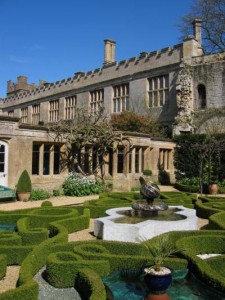
On this day in history, 30th August 1548, Catherine Parr, Queen Dowager and wife of Thomas Seymour, Baron Seymour of Sudeley, gave birth to a healthy baby girl. The birth took place at Sudeley Castle and the little girl was baptised Mary, being named after her godmother and stepsister, Mary Tudor, the future Mary I.
Lady Mary Seymour had been born into a happy, healthy and loving family, but by the age of seven months she was an orphan and a burden. Her mother had died of puerperal fever just days after her birth and her father had been executed for treason on 17th March 1549; Mary was alone. Her mother’s friend, Catherine Brandon (née Willoughby), the Duchess of Suffolk, was appointed as Mary’s guardian but found the burden of paying for a Queen’s daughter’s household too much. She appealed to William Cecil to talk to the Duke of Somerset about helping her with Mary’s upkeep and this resulted in an act of Parliament being passed in January 1550 allowing Mary to inherit her father’s property.
As Christine Hartweg points out in her article Who Cared for Little Mary Seymour’s Upkeep?, the next record of Mary Seymour is a grant from the privy council on 13th March 1550 for her household’s wages, liveries and food. Sadly, that is the last we hear of little Mary Seymour, who would have been around 16 months old when she was allowed to inherit Thomas Seymour’s remaining property. Mary just disappears from the records and she never claimed her inheritance.
What happened to Mary?
Historian Linda Porter believes that Mary died in infancy and that this is backed up by a poem written by John Parkhurst, Catherine Parr’s chaplain. The poem, which is found in his 1573 collection, reads
“I whom at the cost
Of her own life
My queenly mother
Bore with the pangs of labour
Sleep under this marble
An unfit traveller.
If Death had given me to live longer
That virtue, that modesty, That obedience of my excellent Mother
That Heavenly courageous nature
Would have lived again in me.
Now, whoever
You are, fare thee well
Because I cannot speak any more, this stone
Is a memorial to my brief life.”
Linda Porter writes that “this must surely be the epitaph that Parkhurst, who would have known Lady Mary Seymour, wrote on her death”, and who else could it refer to? Porter concludes that “It suggests, as has long been conjectured, that she died young, probably around the age of two. She may well be buried in Lincolnshire, near Grimsthorpe, the estate owned by the Duchess of Suffolk, where she had lived as an unwelcome burden for most of her short, sad life.”
You can read more about this in Linda Porter’s article for History Today – see Lady Mary Seymour: An Unfit Traveller.
Romantic tradition has Mary surviving childhood and puts her disappearance down to her being sent to Ireland, and being raised there by the Hart family, friends of her late father, or by her being sent to France to escape Protestant persecution in Mary I’s reign. Victorian historian and author Agnes Strickland writes of Mary surviving into adulthood and marrying Sir Edward Bushel, a member of the household of Queen Anne of Denmark, but I don’t see any evidence to back this up.
The mystery of Mary’s disappearance is, of course, perfect for historical novelists and Mary’s story is featured in Sandra Byrd’s novel “The Secret Keeper: A Novel of Kateryn Parr”. Sandra wrote a guest article for us on Mary – see What Happened to Lady Mary Seymour?.
What do you think happened to Mary?